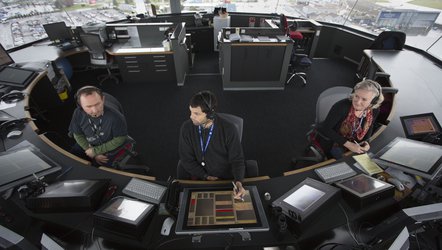
Shift Optimisation for Air Traffic Controllers
Advanced Analytics | Custom Analytics + Software Solutions
Helping Airways New Zealand maximise the value and application of their data – and plan for the future.
Airways New Zealand is New Zealand’s air navigation service provider. Airways controls all domestic and international air traffic travelling within New Zealand’s Flight Information Region, which totals 30 million square kilometres – one of the largest areas of airspace in the world.
The Challenge
As part of their roster planning process, Airways wanted to confidently and efficiently model a set of optimal shifts for air traffic controllers given numerous constraints. As the existing process was manual and time-consuming, they wanted to move towards a data-driven solution to automate this process and also provide the functionality to test scenarios.
The Solution
Harmonic conducted an analysis of inputs into air traffic data and the associated workloads with respect to building the required roster coverage and workforce requirements to cater for this demand.
These insights were then applied in building the roster analytics feature of the solution, which analyses coverage and workload data.
This data can then be used to inform the creation of the current and future coverage statements, which can then be exported to model an optimal set of shifts (using linear programming) for a roster group which provides the necessary workforce for the specified demand.
The set of shifts is optimised from productivity and efficiency perspectives taking into account traffic profiles and workforce constraints to ensure the shifts are not just theoretical, but are practically deployable.
The ability to tweak parameters provides rapid scenario planning functionality as well as the ability to gain insights into potential operational efficiencies.
The Result
- A key operational and planning tool that provides valuable insights to inform decision making.
- The user-friendly and visual solution allows quick and easy access to reliable information, validates decision-making, and the ability to explore what-if scenarios.
- Increased capability to analyse different options or constraints and plan for the future.
- Time-savings - replaced a time-consuming, manual process with an automated, analytically advanced process.
- Improved confidence that rostering is optimised and accurate.
We are now in a more powerful position through data driven coverage requirement calculations and are able to quickly analyse ‘what if’ scenarios for current and future operations. This greater vision of our baseline and insights enable us to identify where future opportunities may be for improved service provision and cost effectiveness.
— Nigel Fitzhardinge, Manager Workforce Planning and Performance